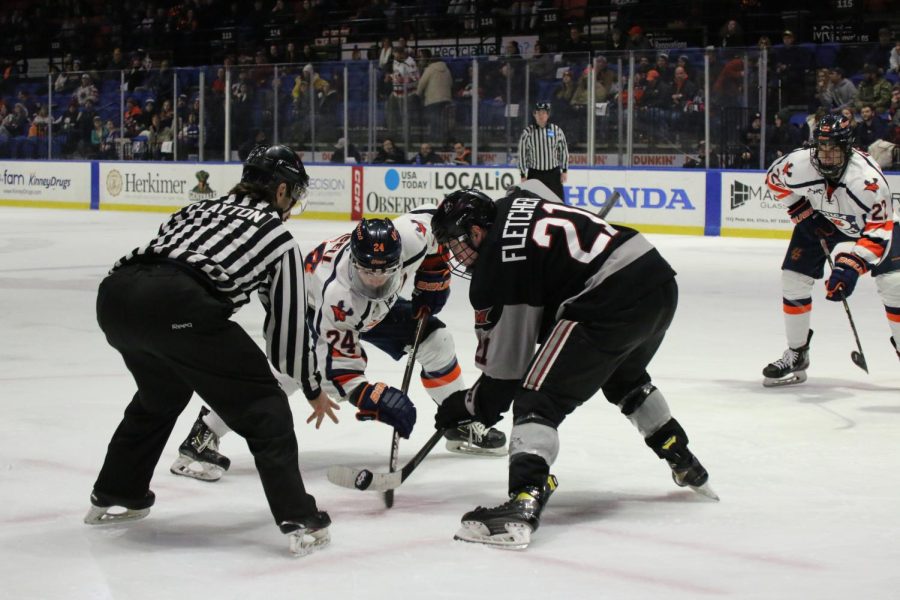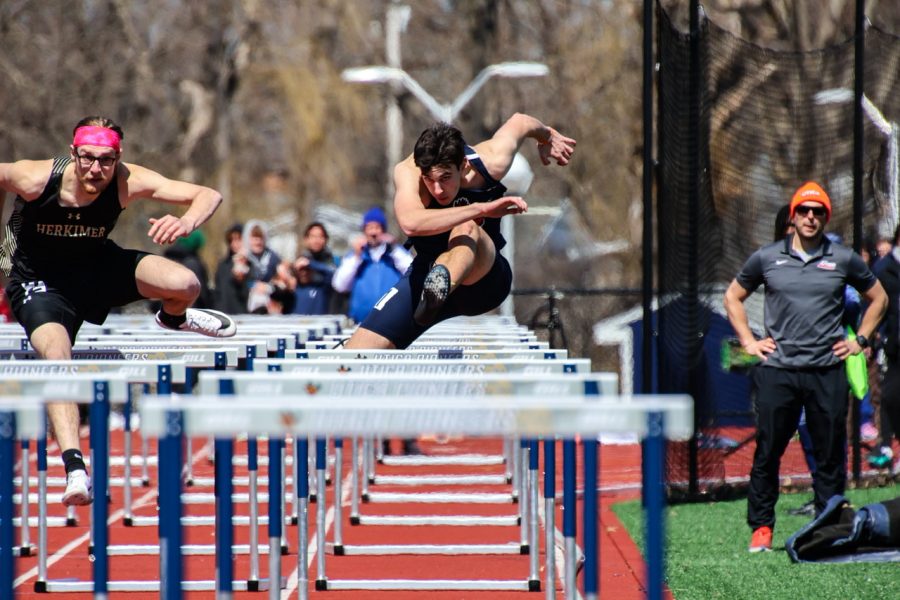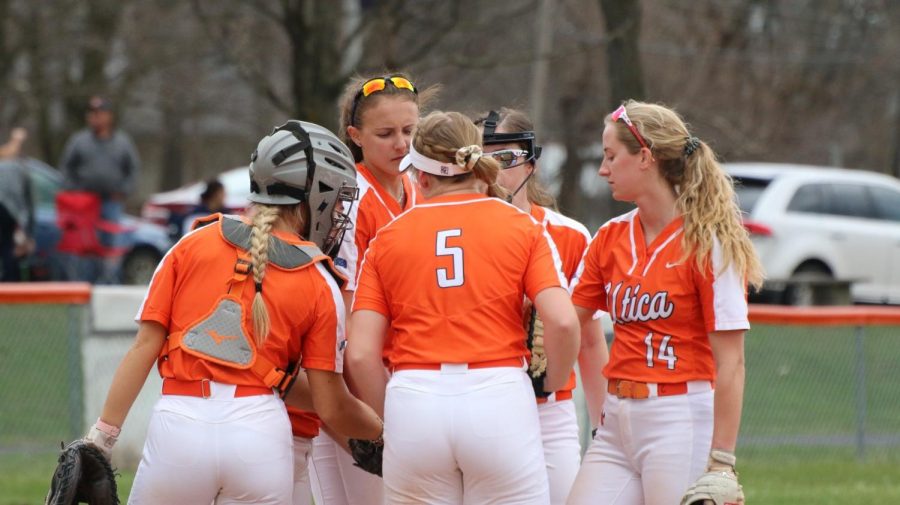Step 1: Preview
The 2010 Winter Olympics were filled with iconic sports moments from premiere athletes who were arguably in their prime at the time. Shaun White took his second-straight gold medal in the Men’s Halfpipe, Apolo Ohno became one of the USA’s most achieved winter athletes in the country at the time and Sidney Crosby closed the games with his iconic “Golden Goal” to give the Canadian men’s hockey team the gold medal in an overtime win against the United States.
Yet, in the 2010 games, and in most Olympic processes, a majority of fans choose to tune out the qualification process of getting to the games in the first place. Sometimes, these events can be just as interesting as the Olympic games.
This happened to be the case for the Bulgarian Women’s National Team in ice hockey, yet, in a way that the hockey world never thought would be imaginable before.
Step 2: Qualification
Qualification for the women’s hockey tournament at the Olympics started in 2008. The system of qualification ran through the International Ice Hockey Federation (IIHF), and it’s a process that still occurs today.
At the time, there were a total of 34 countries in the world competing in women’s ice hockey at the international level. Throughout the course of annual world championships, the IIHF ranked all 34 countries based on several performance indicators at each championship. The system then assigned points to teams at each tournament for ranking purposes. The IIHF totaled these points every four years to determine the top six teams that qualify for the following Olympic games.
Based on performance at the 2005, 2007 and 2008 world championships, along with the 2006 Winter Olympics, Canada (2,950 points), the United States (2,930 points), Finland (2,770 points), Sweden (2,760 points), Switzerland (2,645 points) and Russia (2,575 points) all received automatic qualification to the 2010 Winter Olympics.
To give lower-ranked teams a chance to qualify for the games, the IIHF split every remaining team after the top six into groups. These groups were split into four-to-five teams per group, who played each other once. The team with the most wins, and thus points in the standings, would then compete in a playoff format to determine the final two teams that qualify for the Olympics.
For the sake of the article, we’re going to focus on Group A, which consisted of Slovakia, Italy, Latvia, Croatia and Bulgaria.
There were a total of 10 games played in Liepaja, Latvia between these teams over the course of five days in September of 2008. These five days would prove to be a nightmare for the Bulgarian team.
Step 3: Embarrassment
Bulgaria opened group play with a game against the Italians on Sept. 2, 2008. A total of 45 people in attendance witnessed the Bulgarians get crushed by a score of 41-0. To put this in perspective, the Italians scored a goal about once every minute of the game.
Italy totaled 122 shots on goal in the game, while the Bulgarians managed four shots on its opposition. Four Italian players recorded hat tricks and the team finished with 41 goals and assists in one night of play.
Fast forward to the Bulgarians second game against Croatia the next day on Sept. 3. Bulgaria managed to score a goal late in the third period of the contest from forward player Olga Gospodinova. This would be the only goal scored from the team in the entire group stage and the team went on to let in 30 goals against the Croatians that night.
In a similar fashion to the team’s first game, multiple Croatian players recorded hat tricks that night. Diana Posavec Kruselj, a Croatian defenseman, recorded 11 goals in the game.
It didn’t get any better for the Bulgarians in the team’s third game against the host country Latvia. Bulgaria lost 39-0 and recorded the team’s least amount of shots on goal in a group stage game up to that point, only managing two on the net.
Before recapping the team’s final game against Slovakia, let’s put these numbers into perspective.
Back in the 1980s, it was easier to score a goal in the game of hockey than it is today. Goalie size, both in terms of equipment and physical status, is historically cited as the primary reason for this. In the 80s, goalies weren’t given nearly as much protective equipment that we see today. Pads were much smaller in width, shoulder and stomach protection was very thin and the famous masks that audiences see in movies such as Slapshot were being used in the National Hockey League.

The size of the net (72” x 48”x 40”) has never changed, nor has the size of the puck (three inches in diameter). But, when the size of the person guarding the net is smaller, there is more net to shoot at.
The blog, Hockey Wilderness, covered this changing dynamic of the game after former Toronto Maple Leafs head coach, Mike Babcock, told reporters that goals are simply “much harder to come by these days.”
The blog tested this hypothesis by comparing goal totals in 1980 and in the 2014-2015 season. With 30 teams in 82 games, there were a total of 2,460 games of NHL hockey played in the 2014-2015 season. Both conferences scored a total of 6,719 goals that season, averaging 2.73 goals per game.
In the 80s, with just 21 teams in 80 games, the two conferences totaled 6,457 goals that season with 3.84 goals per game. The blog goes on to note that if two extra games were added for each team that season, based on the league’s goals per game average, the total number of goals scored would be 9,446.
Furthermore, nine of the top 10 goalscorers of all time in the NHL played within the 1980 time-frame. Wayne Gretzky leads the list with 894 goals. In 1981, Gretzky scored his 50th goal of the season in just 39 games; an amount that will never be recorded again in that amount of time. The only exception to this list is current Washington Capitals forward, Alex Ovechkin, who at age 35 has a total of 712 goals.
It’s an accomplishment (maybe not so for the Bulgarians) that the team let in 110 goals in just three games, especially in the modern era. In 70 NHL games last season, the Detroit Red Wings let in the most goals in the league with 267. The Bulgarians were a little less than halfway to that amount in three contests.
Step 4: A World Record
The final game for the Bulgarian women’s team in the group stage took place on Sept. 6, 2008, against the Slovakians. Up to this point, Slovakia had been dominating the group, only letting in one goal combined in the team’s two victories against both Italy and Latvia.
The team, undeniably, were favorites to take the group. They ended up doing just that and a few months later, the team would become the seventh out of eight teams to qualify for the Olympics along with China. The team would then go on to get routed by Canada in the Olympics by a score of 18-0.
That all came after the team scored 82 goals in one game against the Bulgarians. The Slovakians scored 31 goals in the first period, 24 goals in the second period and 27 goals in the third period. To achieve this in a 60-minute game, the Slovakians had to score a goal every 43.9 seconds.
A total of 16 out of 20 Slovakian players scored goals that night, with a total of 10 players individually scoring more than five goals. The team also managed 139 shots on goal in the game for a conversion rate of 59 percent. Forwards Anna Dzurnakova, Petra Dankova and Maria Herichova scored more than 10 goals in the game, making them the top goal scorers in the entire group up to that point.
The Bulgarians only statistic was penalty minutes with a total of 39. Forward Tina Lisichkova totaled 25 of those penalty minutes in the game. A wealth of these penalty minutes seem to come from several altercations throughout the game, including shoving and almost fighting between the two teams.
According to blog writer James Mirtle, the Bulgarians substituted the team’s starting goalie after letting in 77 goals with only three minutes left in the game. The backup goaltender then let in five goals on five shots in one minute and 25 seconds. Despite this, starting goalie Liubomora Shosheva saved 57 shots in the game. Offensively, the Bulgarians did not manage a shot on the net.
This scoreline, according to the Guinness World Records, is the highest-scoring professional ice hockey game of all time.
There was no mercy rule in international women’s hockey at the time, either. Mercy rule allows a team facing potential humiliation in terms of the scoreline to forfeit the game, while also preventing the victorious team satisfaction from inflicting a blowout.
It was only in 2010, two years after the game, that the president of the International Ice Hockey Federation, Rene Fasel, considered the possibility of creating a mercy rule in women’s hockey. Since then, no updates have been provided on the matter, nor has a mercy rule been added to the IIHF rulebook created in 2019, which is valid up until this season.
Oddly enough, this game was the only of the Bulgarians four contests that collected post-game comments that were on record. Slovakian coach Miroslav Karafiat referred to the game as “training” in a post-game interview, despite playing two competitive games prior to the contest.
The chair of the Bulgarian Ice Hockey Federation called Slovakia’s display a “mockery” and “not at all sportsmanlike.”
Media outlets across the world quickly picked up on this story, ranging from ESPN, Yahoo! Sports and even the NHL. The Bulgarian national media called the loss “an embarrassment to the entire country” and pointed blame at the Bulgarian government for the devastating loss.
It was a PR-nightmare for the small hockey nation and one that still affects them to this day. The team’s website and social media profiles are outdated and filled with ridiculing comments. In 2020, the Bulgarian women’s team was still ranked last in the world according to the IIHF.
When all was said and done in both group play and in IIHF standings after the 2010 Olympics, the Bulgarian team finished with zero points in the standings. The team just above the Bulgarians was Turkey, with a total of 840 points.

An Explanation
Very few publications have gone into detail about the Bulgarian team during this time, both nationally and across the globe. Yet, national publications immediately after the game pointed fingers to the Bulgarian government to blame, sourcing the very limited access to play in the country.
To help put this into perspective, at the time, Bulgaria had a population of 7.4 million. Within this number, there were only 299 registered hockey players in the country with three indoor rinks in 42,855 square miles. Out of the 299 registered players, there were only 37 females likely ranging from very young ages.
In contrast, Canada had 74,000 female players registered in various leagues throughout the country. This gives the nation a lot more to choose from at the national level to fill a team consisting of 20 openings.
Bulgaria also had a professional league for these female players, but the league only consisted of two teams at the time, which wasn’t sustainable to run the operation.
So, the pool of players to select was minimal and the development of homegrown and professional talent wasn’t there. In the end, there wasn’t much invested in women’s hockey in the country, which still remains true to this day. In fact, national registration for female hockey in Bulgaria recently declined from 65 players in 2016 to 53 players in 2020.
Although unconfirmed, some sources indicate that the Bulgarian government simply threw a team together at the last minute, filled with females who could skate. Though the likeliness of this theory remains slim, there are no filings of international play from the Bulgarian Ice Hockey Federation before 2008, meaning that a rushed federation could’ve put a team together just to qualify for play.
In the end, both statements indicate a lack of priority in the country for the game. From roster-building all the way to the team’s final game against Slovakia, it only took a few moves to tarnish the Bulgarian hockey identity forever.


















![President Todd Pfannestiel poses with Jeremy Thurston chairperson Board of Trustees [left] and former chairperson Robert Brvenik [right] after accepting the universitys institutional charter.](https://uticatangerine.com/wp-content/uploads/2023/10/unnamed.jpeg)














































































































